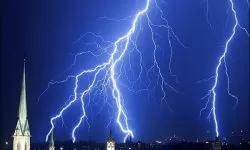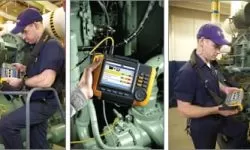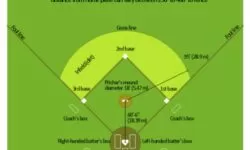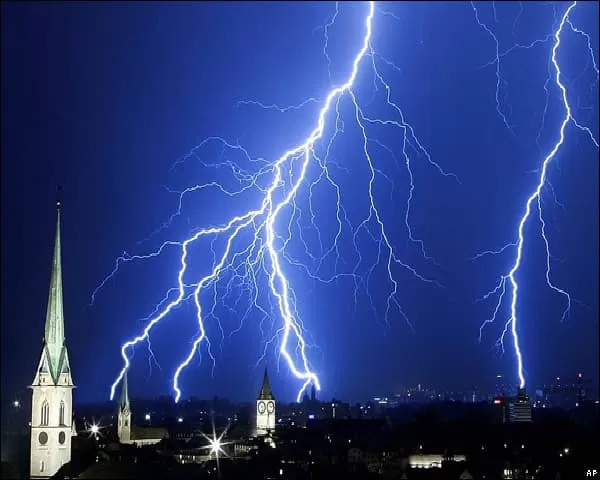How is Electricity Produced ?
First, to generate electricity, you will need a fuel source, such as coal, gas, hydro or wind power. Regardless of the fuel chosen, most generators work on the same proven principle: turn a turbine to spin magnets surrounded by copper wire, to obtain the flow of electrons through the atoms, which in turn generates electricity. Coal and gas work in a similar way; both burn to heat water, which creates steam and turns the turbine.
Renewable energy sources, such as hydropower and wind, work slightly differently, as water or wind is used to fire the turbine and generate electricity. Solar photovoltaic panels again take a different approach: they generate electrical energy by converting solar radiation into electricity using semiconductors. An electric power station uses a turbine, motor, water wheel, or other similar machine to drive an electric generator or a device that converts mechanical or chemical energy into electricity.
Steam turbines, internal combustion engines, gas combustion turbines, water turbines, and wind turbines are the most common methods of generating electricity. Most of the electricity in the United States is produced by steam turbines. A turbine converts the kinetic energy of a moving fluid (liquid or gas) into mechanical energy.
Steam turbines have a series of blades mounted on a shaft against which the steam is forced, thus turning the shaft connected to the generator. In a fossil-fueled steam turbine, the fuel is burned in an oven to heat water in a boiler to produce steam. Coal, oil (petroleum) and natural gas are burned in large furnaces to heat water and produce steam which in turn pushes the blades of a turbine.
Natural gas, in addition to being burned to heat water for steam, can also be burned to produce hot combustion gases that pass directly through a turbine, spinning the turbine blades to generate electricity. Gas turbines are commonly used when grid use is in high demand. In 1998, 15% of the nation’s electricity was fueled by natural gas. Oil can also be used to produce steam to drive a turbine. Nuclear power is a method of producing steam by heating water through a process called nuclear fission. In a nuclear power plant, a reactor contains a core of nuclear fuel, mainly enriched uranium.
When uranium atoms are affected by neutrons, they fission (split), releasing heat and more neutrons. Under controlled conditions, these other neutrons can reach more uranium atoms, split more atoms, etc. In this way, continuous fission can occur, forming a chain reaction that releases heat. The heat is used to convert water into steam, which, in turn, turns a turbine that generates electricity.
Hydroelectric energy. It is a process in which flowing water is used to turn a turbine connected to a generator. There are mainly two basic types of hydroelectric systems that produce electricity. In the first system, the flowing water is stored in reservoirs created by the use of dams. The water falls through a pipe called a gate and applies pressure against the turbine blades to drive the generator to produce electricity. In the second system, called run-of-river, the force of the river current (rather than the fall of the water) applies pressure to the turbine blades to produce electricity.
Other Electricity Generating Sources
Geothermal energy comes from thermal energy buried beneath the earth’s surface. In some areas of the country, magma (molten matter beneath the earth’s crust) flows close enough to the earth’s surface to heat the groundwater into steam, which can be harnessed for use in steam turbine plants.
Solar energy is derived from the energy of the sun. However, the sun’s energy is not available full time and is widely dispersed. The processes used to produce electricity using the sun’s energy have historically been more expensive than the use of conventional fossil fuels. The photovoltaic conversion generates electrical energy directly from sunlight in a photovoltaic (solar) cell. Solar thermal electric generators use the sun’s radiant energy to produce steam to drive turbines. In 2015, less than 1% of electricity was supplied by solar energy.
Wind energy is derived from the conversion of energy contained in the wind into electricity. Wind energy, like the sun, is often an expensive source of electricity production. Biomass (wood, municipal solid waste (garbage) and agricultural waste, such as corn cobs and wheat straw, are other sources of energy to produce electricity.
The electricity produced by a generator travels along the wires to a transformer, which changes the electricity from low voltage to high voltage. Electricity can be moved long distances more efficiently using high voltage. Transmission lines are used to transport electricity to a substation. Substations have transformers that transform high voltage electricity into low voltage electricity. From the substation, distribution lines carry the electricity to homes, offices and factories, which require low-voltage electricity.
Related Topics To The Electricity in ALPHAPEDIA

💚 WHAT IS ELECTRICITY ?

EFFECTS OF ELECTRIC CURRENT

ORIGIN OF ELECTRICITY

HOW ELECTRICITY WAS DISCOVERED ?

💚 WHAT IS STATIC ELECTRICITY ?

HISTORY OF ELECTRICITY SUMMARY
Topics Relateds With Projects in ALPHAPEDIA

HOW ELECTRICITY WAS DISCOVERED ?

How to INSTALL LAMINATE FLOORING ?

SOCCER COURT DIMENSIONS

💚 VIBRATION SPECTRUM ANALYSIS

HOW TO SAND WOOD With or Without Sandpaper

BASEBALL FIELD DIMENSIONS
Other Topics of Interest in ALPHAPEDIA

FREE ICHTHYOLOGY COURSE

FREE MASTER DEGREE IN CIVIL ENGINEERING

FREE PHYSIOTHERAPY COURSE

BEST CAMERA PHONE in 2019 and 2020

FREE PRIMARY EDUCATION COURSE

FREE CALLIGRAPHY COURSE


